The winners of the ProCure21+ Award for Best Healthcare Project of the 2013 Building Better Healthcare Awards is
This award recognises the project considered to be the best overall healthcare development delivered under either the ProCure21 or ProCure21+ frameworks so far
Winner: Tyne (Laing O’Rourke, Northumberland, Tyne and Wear NHS Foundation Trust, Medical Architecture)
Procured through a P21+ contract, the concept of Tyne is based on the client’s objective; to offer exemplary healthcare to patients and provide staff with the very best environment and resources to continue delivering excellent service to patients.
Forensic learning disabilities is one of the most-challenging and resource-intensive services in the NHS and exists largely outside the public gaze.
Comprised of replacing and modernising dilapidated facilities, Tyne offers contemporary healthcare, predominately for elderly men with learning disabilities.
Set within a secure and protective environment, users with challenging behaviour can enjoy ‘a life like any other’ within natural and therapeutic surroundings, enabling staff to work in safety and concentrate on giving the best care possible.
The longstanding 10-year partnership between the client, Northumberland, Tyne and Wear NHS Foundation Trust and contractor, Laing O’Rourke, has proven a successful collaboration via a series of healthcare projects.
The P21 framework supported a united approach, enabling the team to tackle problems, seize opportunities and provided them with the clarity, consistency and clear communication to deliver the project on time and to budget.
A number of cost savings made throughout the scheme were re-invested into making improvements to the patient care areas.
At the start of the process a workshop was held with all members of the design team, plus the clinical and maintenance stakeholders to ensure the project aims and objectives could be recorded, reviewed and evaluated. This team approach proved invaluable while designing Tyne, giving all involved a greater insight as to how the scheme would benefit staff and users.
Key features within the building include the installation of Steri-spray showers, reducing the risk of Legionella infection; personalised bedroom doors that help to enhance memory; improved wardrobe layouts for use in forensic situations where coathangers are not permitted; an AEL door lock control system; and a number of integrated artworks by local artist, Dan Savage.
The BBH Awards judges said: “Forensic medicine is a really difficult area to work in and they have put a lot of work in and tried to bring the outside inside.
“These are very secure units because they have to be, but they have not used fencing and have instead used the building as the boundary and that is a really good move.
“It is very robust, but very good and little touches like the curves in the tables in the bedrooms are very nice.
“There is also a very usable garden that can mature over time.”
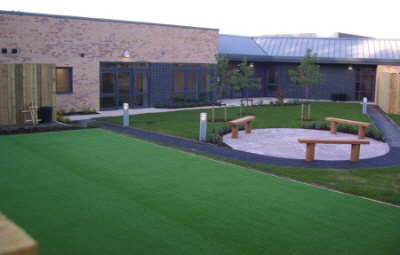
Astley Court in Norfolk
Highly commended: Astley Court (Simons Group, Hertfordshire Partnership University NHS Foundation Trust
Astley Court in Norfolk is an exercise in partnership, collaboration and involvement. The whole project team grasped what needed to be achieved early on, meaning that all discussions and contributions followed the same progressive direction, always with a shared understanding.
At all stages service users, families and carers, and staff have provided input into the design and build, which is readily reflected within the building and its surroundings.
The resulting building offers bright, airy spaces, with access and views to the outside throughout. Innovations such as the safe, enclosed garden and high support areas provide comfort and dignity, even when patients are at their most unwell. Sustainable design features also give the natural light, air and space that are so necessary in creating a therapeutic environment.
For staff, practical consideration for support service functions, including anti-ligature design, cleaning regime and infection control is discretely provided, and the building has integrated support technology to aid care provision.
During the project the supply chain was challenged to deliver commercial savings. Prefabricated structurally-insulated panels (SIPs) were used for the external wall construction, which will lead to long-term savings for the client of up to 10% for heating bills. The natural ventilation strategy due to high ceilings has resulted in virtually no mechanical ventilation, and wind catchers connected to automatic high-level opening windows complete the strategy. Solar panels provide in excess of 10% renewable energy and linked with LED lighting result in an Energy Performance Certificate ‘B‘ rating.
Local contractors were sourced to improve delivery and to meet tough timescales, resulting in the scheme being delivered on time and within budget.
The new facility will vastly improve the living and working environment for patients and staff alike.
The trust’s service line lead, Owen Fry, said: “As an NHS trust, we aim to be the leading provider of mental health and learning disability services in the country. Astley Court provides a wonderful flagship for that aspiration.”
The judges added: “This is a nice design with some really good garden spaces.”
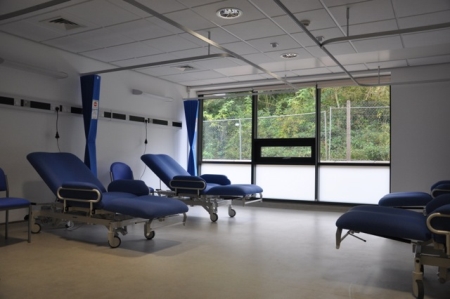
Corby Urgent Care Centre (Kier Group, Corby Borough Council, NHS Northamptonshire, Maber Architects)
The other finalists
Corby Urgent Care Centre (Kier Group, Corby Borough Council, NHS Northamptonshire, Maber Architects)
The Corby Urgent Care Centre delivers healthcare closer to home within an effective, flexible and affordable estate solution.
The project was jointly funded by Corby Borough Council and NHS Northamptonshire, designed by Maber Architects, and constructed by Kier under the P21+ framework.
It provides facilities for extended GP services, diagnostics and urgent care, bringing together the existing minor injuries unit and 8am-8pm GP service.
Service user, Thom Parker-Marrs, said of the new building: “On entering it was very obvious where to go. It was clean, airy and fresh and it feels ‘friendly’ unlike a hospital.”
The facility is unique in that it has 12 observation couches in three adjoining bays, providing privacy and dignity for paediatric and both adult male and female assessment, which enables extended care to be delivered. There are also seven consulting rooms and six treatment rooms with X-ray, ultrasound and a plaster room.
Dr Nazir Hussein, a GP at the unit, added: “It is a pleasure to enter the building each morning for work. The reception area is open and patient friendly, which leads to a colourful and spacious atrium as the waiting area. The arrangement, design, light materials and fixtures in the consulting rooms are excellent and conducive to patient wellbeing.”
The development is linked to the existing Lakeside Surgery on the Willowbrook Healthcare campus by means of a combined reception and waiting area and is set in a pleasant location surrounded by ancient woodland and parkland complete with lake.
The observation bays look out on a tranquil woodland setting, while the waiting area looks onto a courtyard garden.
The design acknowledges Corby’s industrial heritage by incorporating metal cladding (Corby’s past) and natural timber elements (Corby’s green future).
It has been in operation since October 2012 and has proved a popular and successful asset to the local community.
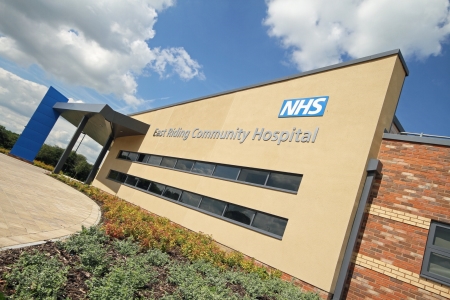
East Riding Community Hospital (Interserve, Humber NHS Foundation Trust)
East Riding Community Hospital (Interserve, Humber NHS Foundation Trust)
The light and spacious £19m East Riding Community Hospital has brought three ageing services together into a single longed-for new community facility fit for the 21st Century.
Based on a ‘community healthcare village’ approach, NHS East Riding of Yorkshire - now Humber NHS Foundation Trust - wanted the development to engage with the local community, a desire achieved by building a large cafe, social spaces and working with the existing greenery to create picturesque landscaped gardens.
The hospital now comprises 30 inpatient beds as well as an outpatient department, minor injuries unit, GP out-of-hours service, diagnostics, and a wheelchair assessment unit. There are also physiotherapy/occupational therapy services, speech and language facilities, nutrition and dietetics services, staff and office facilities for neighbourhood teams, and support accommodation for services including cardiac rehabilitation.
The building utilises natural views and daylight throughout, with a key design element being to provide natural light and views out to all clinical/patient access rooms.
The design team was committed to delivering a sustainable building by adopting the principle of ‘passive’ design to minimise energy consumption. Features of the single-storey facility include a wildflower living green roof.
The facade of the new hospital was clad in brick, render and cedar cladding and reclaimed and recycled materials were used where possible. This produced a highly-energy efficient building, yet one that was mechanically low serviced.
By applying the P21 procurement principles and working closely with the supply chain, considerable savings were made to an extremely tight budget to ensure the scheme’s viability.
Lewisham Hospital Emergency Department Redevelopment (Kier Group, Lewisham Healthcare NHS Trust)
Kier was appointed to work in partnership with Lewisham Healthcare NHS Trust to redevelop emergency facilities to deliver a new adult and children’s emergency department, urgent care centre and emergency X-ray Department.
The new and upgraded facilities enable the best possible care to be delivered, enhancing patient transport services, creating additional parking, and bringing about a 35% reduction in emergency department re-admissions since opening.
The department was designed to promote a more relaxed and caring atmosphere, to minimise aggression incidents, and to streamline patient services.
Commenting on the new building, Keith Howard, the trust’s estates and facilities director, said: “As a result of the P21+ framework, procuring contractors is more efficient and that gives you reassurance. It also means you work together to plan the scheme and thereby deliver the best outcome for all stakeholders, while progressing smoothly. Using ProCure21 allows for greater engagement far earlier in the project.”
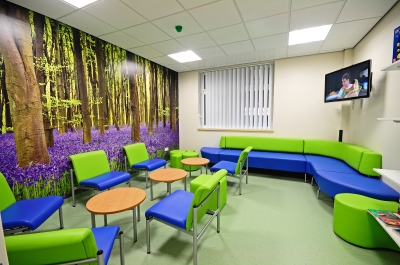
Royal Oldham Hospital Phase 3 Development (VINCI Construction, The Pennine Acute Hospitals NHS Trust)
The Royal Oldham Hospital Phase 3 Development (VINCI Construction, The Pennine Acute Hospitals NHS Trust)
A £44m development based at Royal Oldham Hospital, the new Women and Children's Super Centre is an integral part of the trust’s Making it Better programme to improve maternity, neonatal, and children’s services across Greater Manchester.
The building provides a landmark feature whose orientation maximises views of Manchester and the Peak District.
The central courtyard provides a garden and play area for the children’s facilities on the lower ground level, with natural daylight and ventilation for the upper levels. At the lower level there are more public green spaces for use by patients, staff and visitors.
The intelligent façade, designed to minimise cooling loads, consists of coloured external panels creating a distinct and modern design that breaks from the traditional surrounding brick buildings, providing interest and a welcoming appearance.
P21 and P21+ procurement principles and processes have enabled the team to gain maximum value from the framework. A major factor is that the principal supply chain has now worked in partnership with the trust for eight years and is constantly bringing forward lessons learnt from previous projects and incorporation of good design at very early stages to provide best value.
Sola Amu, clinical director and a consultant in obstetrics and gynaecology at The Pennine Acute Hospitals NHS Trust, said: “This new development is the end point of many decades of carefully-thought-through improvements of maternity, paediatric and neonatal services across Greater Manchester. With this development we will see significant improvements in the quality of care and facilities for women and children.”
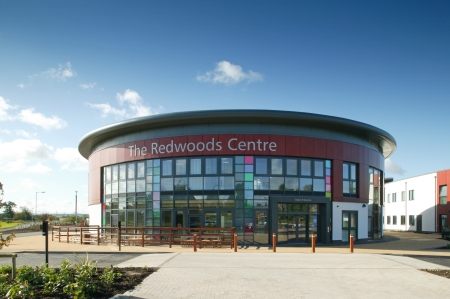
The Redwoods Centre (BAM Construction, South Staffordshire and Shropshire Healthcare NHS Foundation Trust)
The Redwoods Centre (BAM Construction, South Staffordshire and Shropshire Healthcare NHS Foundation Trust)
The Redwoods Centre is a £46m, 112-bed modern mental health centre located in Shrewsbury and consisting of four individual buildings within a 10-acre site.
It opened in September 2012 on time and under budget and offers service users the highest standards of care in a facility designed to feel more like a home than a hospital.
The variance in the use of the facilities - to cater for acute, organic and low-secure service users while also providing an office building for administration and FM staff as well as encouraging the public to utilise the gardens, restaurant and other facilities - meant not only did the buildings need to be functional, safe and secure, they also had to be inviting, comfortable and relaxing.
The internal accommodation is attractively designed, with a light, airy, spacious and non-clinical environment throughout. Outside there are communal gardens as well as secure outdoor spaces, with trees and shrubs carefully chosen to make the gardens a sensory and emotive experience.
One service user said: “It’s good to see that such thought has gone into the design of these rooms, from the magnetic boards and patient-controlled lighting, to the fact that a nurse will no longer have to shine a torch into my face during night rounds and the provision of an armchair and my own en-suite and wardrobe. I wouldn't want to leave!”
And John Ellery, HM coroner for Shropshire, said after a tour of the unit: “The modern facilities are certainly a quantum leap from the old site and I am sure will better serve patients, staff and families alike”
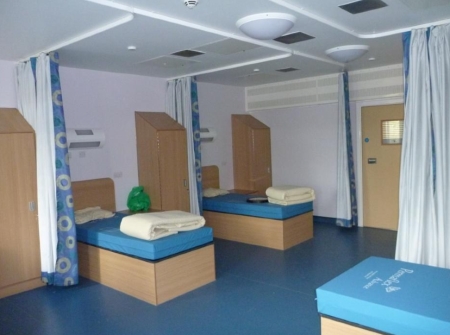
Millbrook Hub (Laing O’Rourke, Nottinghamshire Healthcare NHS Trust)
Millbrook Hub (Laing O’Rourke, Nottinghamshire Healthcare NHS Trust)
Suffering from a mental illness can be distressing enough, but being put in a dull and depressing environment can only make things worse.
This was the driving force behind the demand for the refurbishment project at Millbrook Mental Health Unit.
The project was procured through Laing O’Rourke under the P21 framework and represented the final project with the company prior to the introduction of P21+. It was completed within the allocated timeframe and, with careful management, came in £50,000 under budget.
The main focus of the project was to ensure high-quality improvements were developed to enhance the patient environment and therapeutic facilities, providing improved privacy, dignity and gender segregation.
As part of the project, a new 136 suite was commissioned for people detained by the police under the Mental Health Act Section 136 . It provides a safe and secure environment with a high-quality design to create a bright and airy feel to help calm patients.
Nursing staff have reported dramatic improvement in the ward following the refurbishment. On completion of the development, the team also worked together to create two separate garden spaces for the elderly patients.
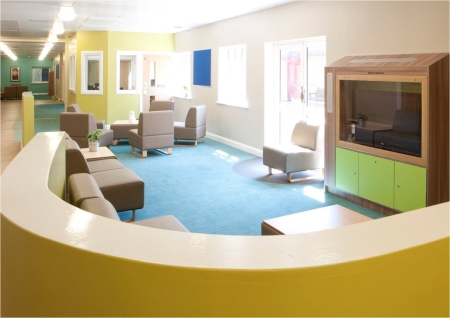
Millbrook Hub (Laing O’Rourke, Nottinghamshire Healthcare NHS Trust)
Wells Road Centre (Balfour Beatty, Nottinghamshire Healthcare NHS Trust)
This forensic low-secure hub is currently the market leader within the area for mentally-ill males.
The project goal was to ensure a build of exceptional quality that would be ligature free, providing 38 en-suite bedroom for patients across two wards.
The existing wards were refurbished to improve vision lines, create large day spaces that reduced violent incidents, provide a large courtyard and a low-stimulus environment for patients experiencing high levels of distress, and to repatriate out-of-area patients.
All the patient rooms have en-suite facilities with accommodation comparable to private providers.
A separate fully-equipped kitchen allows patients the freedom to create their own meals, giving more choice and long-term independence and confidence.
The project was completed in July 2012 and came in £7,000 under the total project budget.
James Alexander, security and projects manager at the trust, said: “Clinical staff were involved from the design stage and throughout the process and then worked closely to resolve any defect issues.
“The use of natural light and colour was a huge improvement on previous accommodation in the hospital and this has now been adopted as a template for subsequent developments. These wards are by a long way the safest environments we have in the hospital.”
A patient added: “We have been able to cook regularly in the kitchen and feel more trusted in our own surroundings”
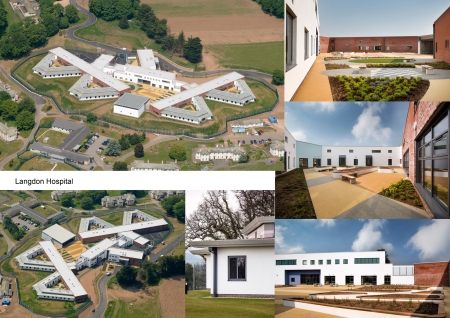
Langdon Hospital (Interserve, Devon Partnership NHS Trust)
Langdon Hospital (Interserve, Devon Partnership NHS Trust)
Completed in April 2013 for Devon Partnership NHS Trust, Langdon Hospital is a 60-bed medium-secure Unit designed to deliver a modern, flexible forensic service.
The scheme offers innovative design solutions, for example providing the wards with ‘private’ enclosed secure gardens and presenting a domestic scale as the public view with a friendly welcoming non-institutional image.
Newly-published NHS medium secure unit design standards were incorporated into the project during construction, requiring all the components to undergo a high level of robustness testing.
The design incorporated the use of the Kingframe system, which arrived on site pre-boarded with high-strength waterproof boards. This was a first for supplier to deliver a non-modular, complexly-shaped building in the healthcare field and brought quantifiable programme benefits (20-week programme) and budget (£140,000).
Jim Masters, project director, said: "From the outset Interserve has consistently delivered, from the initial interpretation of our brief right through to delivery of the product. They have been flexible, responsive and their management of the project has been first class.”







